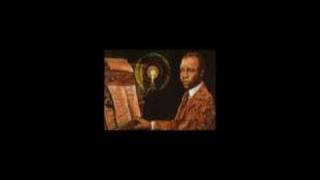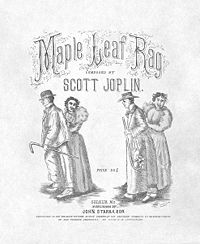| You are not logged in. | login to customize your own personal play list |
“Maple Leaf Rag” by Scott Joplin |
| United States Federal Trade Commission forbids anyone under 13 from viewing these music videos! I want another random song. |
| You are not logged in. | login to customize your own personal play list |
“Maple Leaf Rag” by Scott Joplin |
| United States Federal Trade Commission forbids anyone under 13 from viewing these music videos! I want another random song. |
 |
 |
 |
 |
 |
|
 |
   |
 |
song info “Maple Leaf Rag” by Scott Joplin is a ragtime song.
Artist: Scott Joplin Genre: ragtime jazz Composer: Copyright © 18 September 1899 Scott Joplin Piano: Scott Joplin Date:: 1899 Number of listens: 18780 Current rank: 964 (updated weekly) Highest rank: 960 (play the video all the way through to register a vote for this song) link to the static song information page for this song:
|
 first edition cover |
third edition cover |
AA BB A CC DD
“Maple Leaf Rag” is a multi-strain ragtime march with athletic bass lines and offbeat melodies. Each of the four parts features a recurring theme and a striding bass line with copious seventh chords. The piece may be considered the ‘archetypal rag’ due to its influence on the genre; its structure was the basis for many other rags, including ‘Sensation’ by Joseph Lamb.

It is more carefully constructed than almost all the previous rags, and the syncopations, especially in the transition between the first and second strain, were novel at the time.
Generally, the piece is not considered difficult; however, one must have very good coordination in the left hand to perform the piece successfully, particularly for the Trio, which involves leaps of two octaves. When it was first published, it was considered significantly more difficult than the average Tin Pan Alley and early ragtime sheet music common at the time.
The “Gladiolus Rag”, a later composition by Joplin, is a developed variant of the Maple Leaf Rag, showcasing Joplin’s increasing musical sophistication, and is usually played at a somewhat slower tempo. In addition, the first strain of both Joplin’s “The Cascades” and “Sugar Cane” are also similar to “Maple Leaf Rag”’s first strain.
Legacy
There have been many claims about the sales of the “Maple Leaf Rag”, for example that 1 million copies of the sheet music were sold in the composer’s lifetime, making Scott Joplin the first musician to sell 1 million copies of a piece of instrumental music. Joplin’s first biographer Rudi Blesh wrote that during its first six months the piece sold 75,000 copies, and became “the first great instrumental sheet music hit in America”. However, research by Joplin’s later biographer Edward A. Berlin demonstrated that this was not the case; the initial print-run of 400 took one year to sell, and under the terms of Joplin’s contract with a 1% royalty would have given Joplin an income of $4, or approximately $110 in current value. Later sales were steady and would have given Joplin an income which would have covered his expenses; in 1909 estimated sales would have given him an income of $600 annually (approximately $15,331 in current prices).
—from Wikipedia (the Wikipedia:Text of Creative Commons Attribution-ShareAlike 3.0 Unported License applies to Wikipedia’s block of text and possible accompanying picture, along with any alterations, transformations, and/or building upon Wikipedia’s original text that ThisSideofSanity.com applied to this block of text)
This music player is available as open source code. Everyone can build their own personal free and legal music player. This source code is free for any legal non-commercial and/or non-profit and/or educational and/or private purpose. This open source player is courtesy of This Side of Sanity (ThisSideofSanity.com) and OSdata (OSdata.com).
Build your own player. Avoid the hassles and fees of commercial music services. Let there be a million free and independent music players on the web. Strongly suggest building players dedicated to specific kinds of music. Notify me of the location (URL) and specialties of your custom player.
Proverb:For every joy there is a price to be paid. —Proverb of the Outer Temple of Luxor |

Green Orange archive
totals
michaelm
Enjoy the This Side of Sanity website Twitter feed.
Enjoy the This Side of Sanity Twitter feed.

If you spot an error in fact, grammar, syntax, or spelling, or a broken link, or have additional information, commentary, or constructive criticism, please contact Milo at PO Box 5237, Balboa Island, Calif, 92662, USA.
Copyright © 2011, 2012, 2013 Milo. All rights reserved. Todos Derechos Reservados. The copyrights on all source code and the data base belong to Milo and are used on this web site by permission.